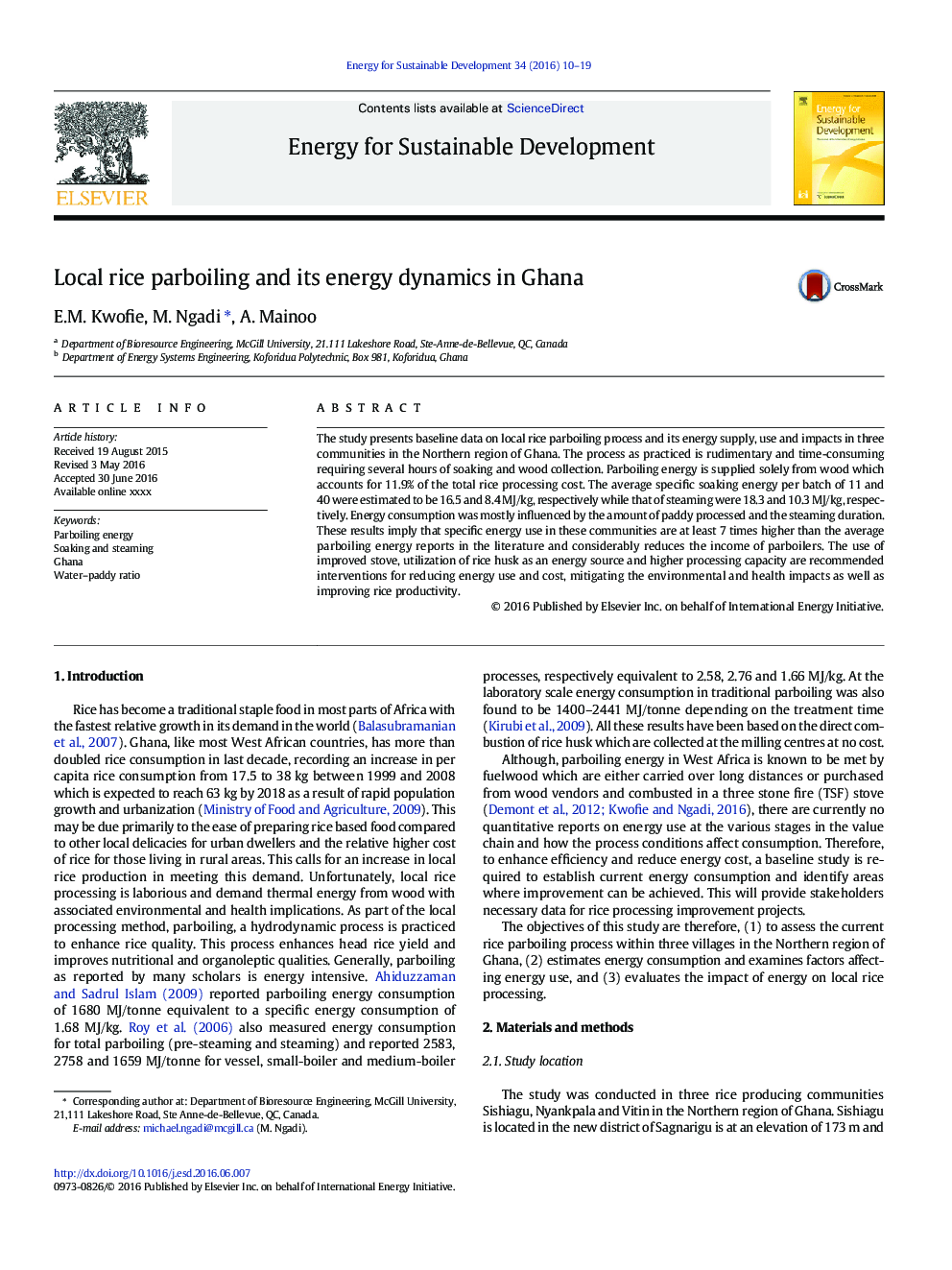| Article ID | Journal | Published Year | Pages | File Type |
|---|---|---|---|---|
| 1046800 | Energy for Sustainable Development | 2016 | 10 Pages |
•Local parboiling process and energy use is investigated.•Fuelwood is the only source of parboiling energy.•Energy accounts for 11.9% of total rice processing cost.•Energy consumption is more than 7 times higher.•Increasing parboiling capacity can reduce energy use.
The study presents baseline data on local rice parboiling process and its energy supply, use and impacts in three communities in the Northern region of Ghana. The process as practiced is rudimentary and time-consuming requiring several hours of soaking and wood collection. Parboiling energy is supplied solely from wood which accounts for 11.9% of the total rice processing cost. The average specific soaking energy per batch of 11 and 40 were estimated to be 16.5 and 8.4 MJ/kg, respectively while that of steaming were 18.3 and 10.3 MJ/kg, respectively. Energy consumption was mostly influenced by the amount of paddy processed and the steaming duration. These results imply that specific energy use in these communities are at least 7 times higher than the average parboiling energy reports in the literature and considerably reduces the income of parboilers. The use of improved stove, utilization of rice husk as an energy source and higher processing capacity are recommended interventions for reducing energy use and cost, mitigating the environmental and health impacts as well as improving rice productivity.
